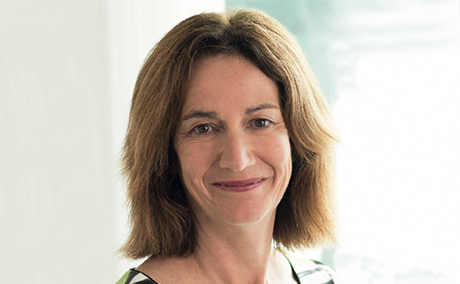In the last eighteen months, Louise Fletcher, Partner in financial services at PwC, has noticed client needs changing significantly. “What they buy is becoming more and more selective and sophisticated. It is important we understand and respond with relevant services.” Louise identifies three distinct types of client need.
“First, clients want insight and ideas. They mean genuine understanding of what works best and why. We need to stretch our thinking and be innovative.
“Secondly, clients still want some kind of objective validation. This may be to challenge their own ideas – are we on the right lines? Or it may be in response to a regulatory challenge – are we compliant and how can we attain advantage from it?
“Thirdly, they want us to provide or foster some kind of disruption. This is in many ways a most interesting requirement in the context of the MCA’s Year of Diversity and the emerging emphasis on disruption in the Association’s next strategy. To meet these needs, we find that we are having to deploy more diverse teams. The teams are not just diverse in the sense of the protected characteristics of the Equalities Act – though increasingly they are. They are also diversifying in terms of the backgrounds, expertise, assumptions, and ways of thinking individual consultants bring. That’s very exciting and more fun.”
What this means is significantly less activity in some ‘traditional’ consulting areas, including project management (which has declined as a share of consulting activity across the whole industry in recent years). “It is almost an expectation now that project management is an intrinsic part of any proposition being sold.”
Louise describes areas where clients need these three main types of support. “Plainly our clients must rise to the challenges of digital and technology. There are huge opportunities for us in assisting them. But these are also the most demanding assignments. Digital transformations can be risky and disruptive. They challenge existing business assumptions and vested interests. They require different business models and capabilities. Most clients approach these challenges in phases and test and learn as they progress.
“Clients also know they need to control and reduce costs at the same time as they invest in selected capabilities. We call our work in this area ‘fit for growth’. It’s about transforming the business model as a whole, so the enterprise can make the most of technology and rise to the challenge of growing in increasingly complex marketplaces. Some of that is about cost-cutting. But it is also about choices: what to do, what to discontinue, where to outsource, where to invest. These issues need to be examined
in a rounded fashion. Where should a business locate its operations across the globe, especially as robots, not geographies, may now hold the key to arbitrage? Businesses are thinking about their growth prospects – as they always have done, but now in a context of unprecedented uncertainty, changing consumer needs and technology developments.”
A particular and ongoing business need, very relevant in Louise’s markets, is absorbing new regulatory requirements in ways that work positively for the business. “But this is not exclusive to financial services. We also see it in utilities. A few years ago, our assignments in this area were about dealing with immediate compliance challenges. Now our work has much more to do with helping clients put in place the governance, agility and entrepreneurialism to anticipate regulatory change and make it part of the value proposition, and even a customer-focused differentiator. That is about embedding the change in the business as a whole, rather than parking responsibility for it in the compliance function.”
Louise also points to significant levels of M&A activity. “This is also more subtle than in the past. We’re getting less straightforward due diligence work, and more requests to evaluate the strategic alignment of organisations and the competitive advantages of mergers, to assess future needs, and model how the combined organisations can create new value and not just cost synergies.”
To do this, PwC is having to become ever more insightful. “We’re developing more digital assets. These include toolkits for scenario planning and forecasting. We’re giving more thought about where we build and locate teams and capabilities. Critically, we’re investing in understanding our own data. Over years of consulting assignments, we have gathered a vast data set. We’re mining this more deeply than ever before to establish how we can we turn it into a new form of insight for clients, one that is embedded in our offer, lending additional authority to our advice and support.” PwC is also moving deeper into delivery and results. “Plans can be good and impressive. But executing the plan and the outcomes is what counts and where many organisations have struggled.”
All these innovations have acute commercial implications. “Risk and reward is becoming an increasingly normalised model for us. But its success requires more than just an agreed outcome metric. Ideally, this form of contracting should be underpinned by values that are shared by client and adviser alike. The recognition of what good looks like, on which risk and reward rests, should be deeply understood by both sides.
“We know that to be partners with our clients, and solve their most impactful and di cult problems, we need to have not only the right talent but a combination of delivery models and assets. We have special centres of expertise, key alliances with other providers, tools and models to deploy, benchmarks and a range of accelerators.
“Being agile and moving at pace are critical. One thing has not changed: the need to invest in relationships and be close to clients. Our clients care about chemistry and want advisers who are just as passionate about their business as they are.”

